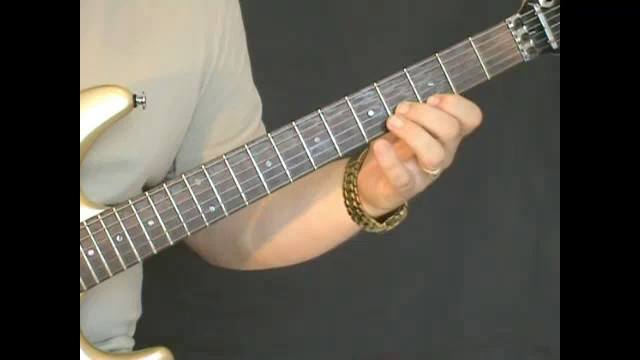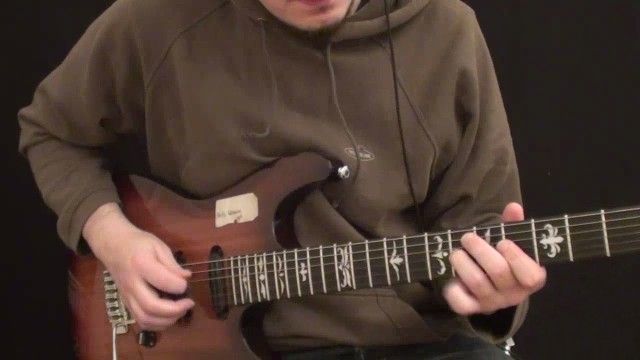Scales
When playing through those familiar old scales, keep a couple things in mind: Everything you would've played on the low E string shifts up two frets. Also, if you visualize the scale from a different perspective, any notes that fall on the regular D string, are fretted in the exact same places on the low D string. Fifth fret D = 5th fret low D, etc.
"Exercise 1: Compensating" demonstrates an A minor scale rooted on the A string. We then play the exact same scale, except rooted from the low D string. You'll notice the transition from the low D to A string is rather "awkward" in nature because of the lack of symmetry.
Next, let's take a look at the second note made in the beginning, "any notes that fall on the regular D string, are fretted in the exact same places on the low D string". "Exercise 2: Using Symmetry" demonstrates an A harmonic minor scale - a scale where we see the symmetry between the two D strings. As we descend, keep your focus on the regular D string - and remember that whatever frets you play on this string, will be replicated identically by the frets we play on the low D string. While making this transition forces us to exclude a note (B) from the scale, it will quickly offer a remedy to confusion when approaching this now-troubling area of the fretboard.
"Exercise 3: Using Symmetry Pt. 2" will help to engrain the concept of symmetry on both strings by forcing your mind to separate from what it might already know (with regards to scales). We'll play through the D minor scale in three-note fragments while immediately mimicing these fragments on the regular D string.



















